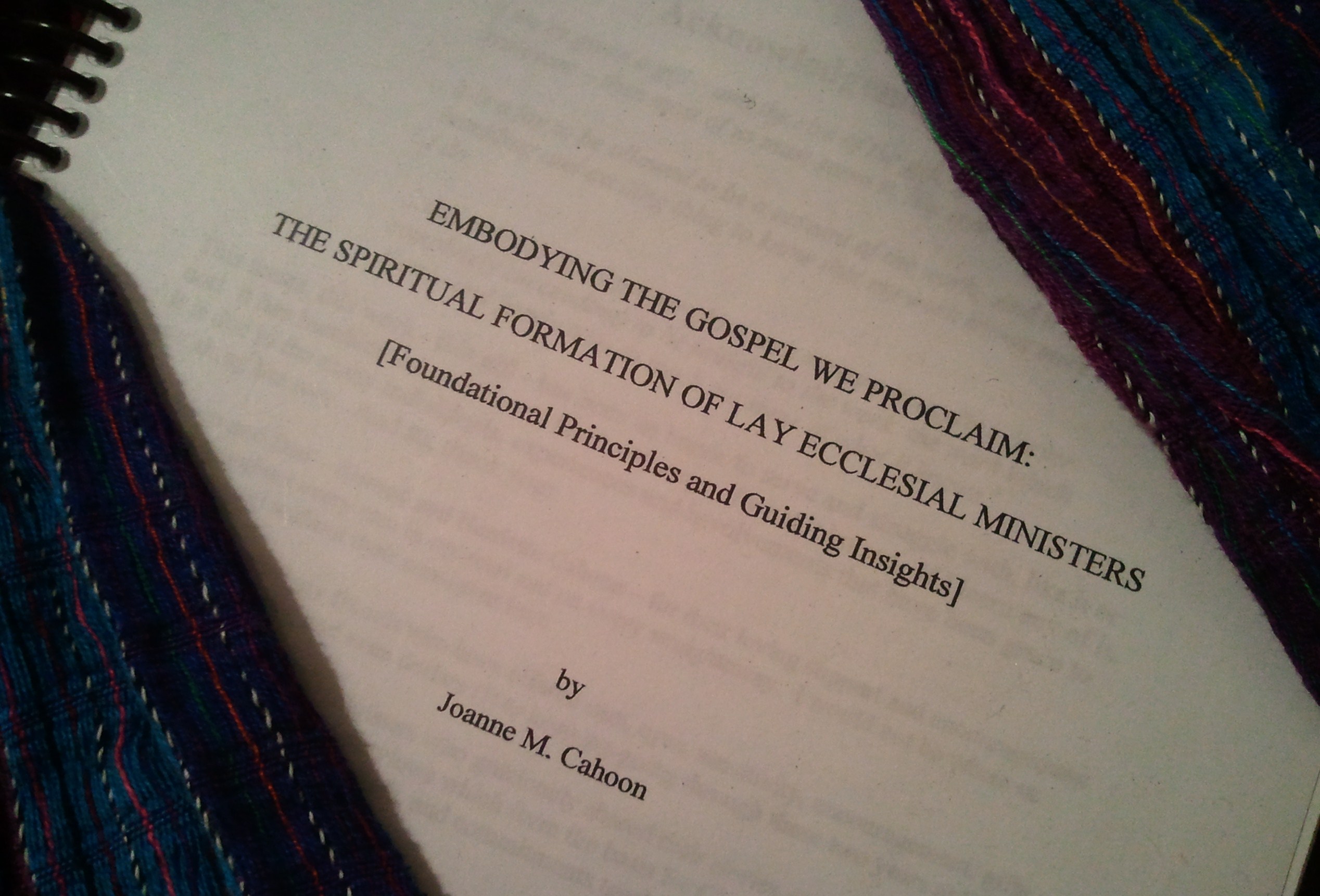I was listening to a podcast today which spoke, in part, about the difference between faith and faithfulness, as it described the writings of St. Paul in the New Testament. It’s hung with me today, sending me down some paths I’ve traveled before, with some musings to go with the season we are all in these days. So, I thought I’d share a little about that with you.
Faith is so often referred to as a noun – something you or I have, something you or I could lose, something you or I could deepen, something passed on to us like an Olympic baton. And some have spoken about how faith is a verb – faith-ing is action related to what we believe, a trusting, a doing, a believing, a seeking what God would seek, a solidarity and expressed compassion and advocacy in line with what breaks God’s heart and what gives God joy. We may resonate with some of these more than others. But I’m liking the insight of faithfulness tonight.
Faithfulness is, to my thinking, a way of being. God is faithfulness in the desert with the Jews escaping. God travels in the fire and the cloud, providing water and food, covenant and promise. God is faithfulness during the long years of the Babylonian captivity, when there was nothing to sing about, much to lament, and stories the Jews told one another of who they were and who God is. God is faithfulness in the visions of the young, the dreams of the old, the words and struggles of the prophets. God is faithfulness as the psalmist sings of joy, anger, fury, lament, praise, pleading, confidence, commitment, covenant, puzzlement. God is faithfulness in the Word spoken who was Jesus – Emmanuel, God-with-us.
Faithfulness is a being with. And we are saved not by a faith we have like a coin in our pocket that can go lost or be found, not by a faith that we sometimes embody better than others, not by a faith even lovingly communicated to us. We are saved by faithfulness, FAITHFULNESS, who is God. And a God ever with us, the definition of faithfulness. In the Hebrew Scriptures, we (through our ancestors in our family faith tree) found ourselves “with-ed” in gardens and palaces, plains and mountains, in fields of grain and under trees, in conflict and pain, in weakness and wanderings away, in captivity and in new freedom. In the New Testament, we meet God with us in every place we could be, would be, will be, can be.
When Paul will write of being saved by faith, his Jewish awareness brings in this understanding of God’s utter faithfulness. We are saved by God’s faithfulness.
In this time focus is very difficult (we are, after all, in the midst of what trauma specialists will tell us is a group trauma, with no defined boundaries to provide the relief of an edge to look toward). The words of tomorrow’s psalm (57) “my heart is steadfast” may have us saying ‘NOT!’, as being steadfast at heart seems an outlandish thing to expect of ourselves or each other. Our concerns and experience have us traveling wide emotional distances – fear, boredom, exhaustion, vulnerability, grief, poignancy, sensitivity, confusion, anger (and then there’s the next 30 seconds!). Our confrontation with uncertainty due to the pandemic unmasks and may remove what we usually have that separates us from knowing the vulnerability of life, of relationships, of that which we depend for stability.
It is in this very place where we are saved by faithfulness. Jesus invited disciples on a way, a path, a following, a way of being and knowing that was experienced. God faithfully walks with all of us, and all of creation. Jesus is that presence with us through every human experience; yes, through challenge, danger, illness, power struggles, unresponsive systems, people who hate or harm, and temptation – but also through everyday beauties like seeds and birds and plants and children and the sea and good work and rest and bread and wine and laughter and love.
Today, it is good to remember God is faithful – in every weather we are in at heart, in our homes, in our relationships, in our world, with creation. God’s name revealed is God-With-Us (Emmanuel). Wherever we wander in whatever frame we are in, we are accompanied. We do not need to focus, to understand in order to be alright: we do not have answers about outcomes and rescue from the complications in which we live. We may think we need many things. What I most need?
To remember that faithfulness saves us. It saves me. And faithfulness, by its nature, never abandons, never leaves us alone, and is a God who creates-loves-sustains and cares in ways beyond our understanding or our ken, who never wastes anything and will weave now in with other threads to make a whole that is beautiful. For love and faithfulness win.
And we in turn can do no other but to live faithfulness by accompanying one another in the uncertainty and the topsy-turvy reality of now which holds so many many difficult things for so many many people.
We are saved by faithfulness. As we remember that, and grow aware that we are walked-with (and so receive the name disciple as we choose to travel with the faithful one too), may we too save others by our chosen faithfulness, walking with one another in these days which hold beauties, fears, challenges. We do this through acts of compassion, kindness, listening, patience, all because we love – the same way the Faithful One companions us.
God be with you. God already is.






